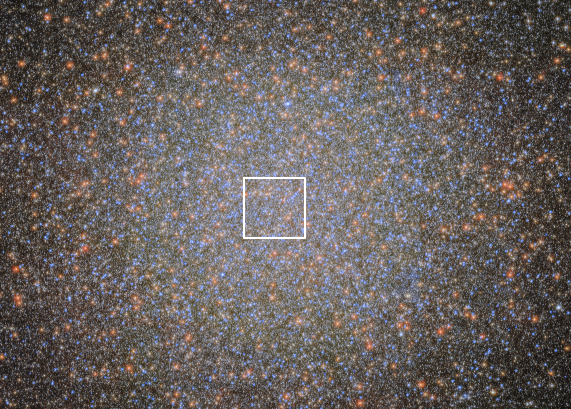Astronomers find nearby black hole that changes our understanding of space
The massive black hole may be the closest one to Earth
Scientists have found an elusive massive black hole that they believe is the closest to Earth.
The black hole was found after researchers spotted fast-moving stars that are being pulled around as if they are close to an extreme object.
It appears to be sheltering an “intermediate-mass” black hole. Researchers have been looking for such an object for decades, and it is the “missing link” in our understanding of black holes.

So far, scientists have found examples of supermassive black holes that can have masses of billions of suns, and they have found solar-mass black holes that can only be as massive as one star. But they struggled to locate the ones in the middle, which should exists as the galaxies grow over time.
The new one was found in a star cluster, Omega Centauri, is a collection of around 10 million stars, visible as a smudge in the night sky south of the Equator.
It looks no different to similar clusters through a small telescope, but the new study confirms what astronomers had been suspecting for some time – it contains a central black hole.
The black hole, which is at a distance of about 18,000 light-years, appears to be stuck in an intermediate stage of evolution, and is considerably less massive than typical black holes in the centres of galaxies.
Researchers say the finding appears to be the missing link between stellar and supermassive black holes.
Black holes have been observed in various sizes, including stellar-mass black holes with masses around five to 150 times that of the Sun, to supermassive black holes which are more than 100,000 times the mass of the Sun.
However, only a few intermediate-mass black holes, between 150 and 100,000 times the mass of the Sun, have been discovered.
Omega Centauri seems to be the core of a small, separate galaxy whose evolution was cut short when the Milky Way swallowed it, the study suggests.
Dr Nadine Neumayer, a group leader at the Max Planck Institute for Astronomy in Germany, said: “Previous studies had prompted critical questions of ‘So where are the high-speed stars?’
“We now have an answer to that and the confirmation that Omega Centauri contains an intermediate-mass black hole.
“At a distance of about 18,000 light-years, this is the closest known example of a massive black hole.”
The supermassive black hole in the centre of the Milky Way is at a distance of about 27,000 light-years.
The study, led by Maximilian Haberle of the Max Planck Institute for Astronomy, is based on more than 20 years of Hubble Space Telescope observations, and published in the Nature journal.
Writing in an accompanying article, Daryl Haggard and Adrienne Cool said: “These newly discovered stars offer the best evidence yet that Alpha Centauri harbours an intermediate-mass black hole.”
The results could suggest that searching for intermediate-mass black holes in other globular clusters may be warranted.
Additional reporting by agencies
Join our commenting forum
Join thought-provoking conversations, follow other Independent readers and see their replies
Comments
Bookmark popover
Removed from bookmarks